Knitting stranded colorwork patterns can result in a fabric that is eye-catchingly gorgeous. Managing floats, however, can be an incredible nightmare. While the front looks all nice and pretty, the inside can be such a mess.
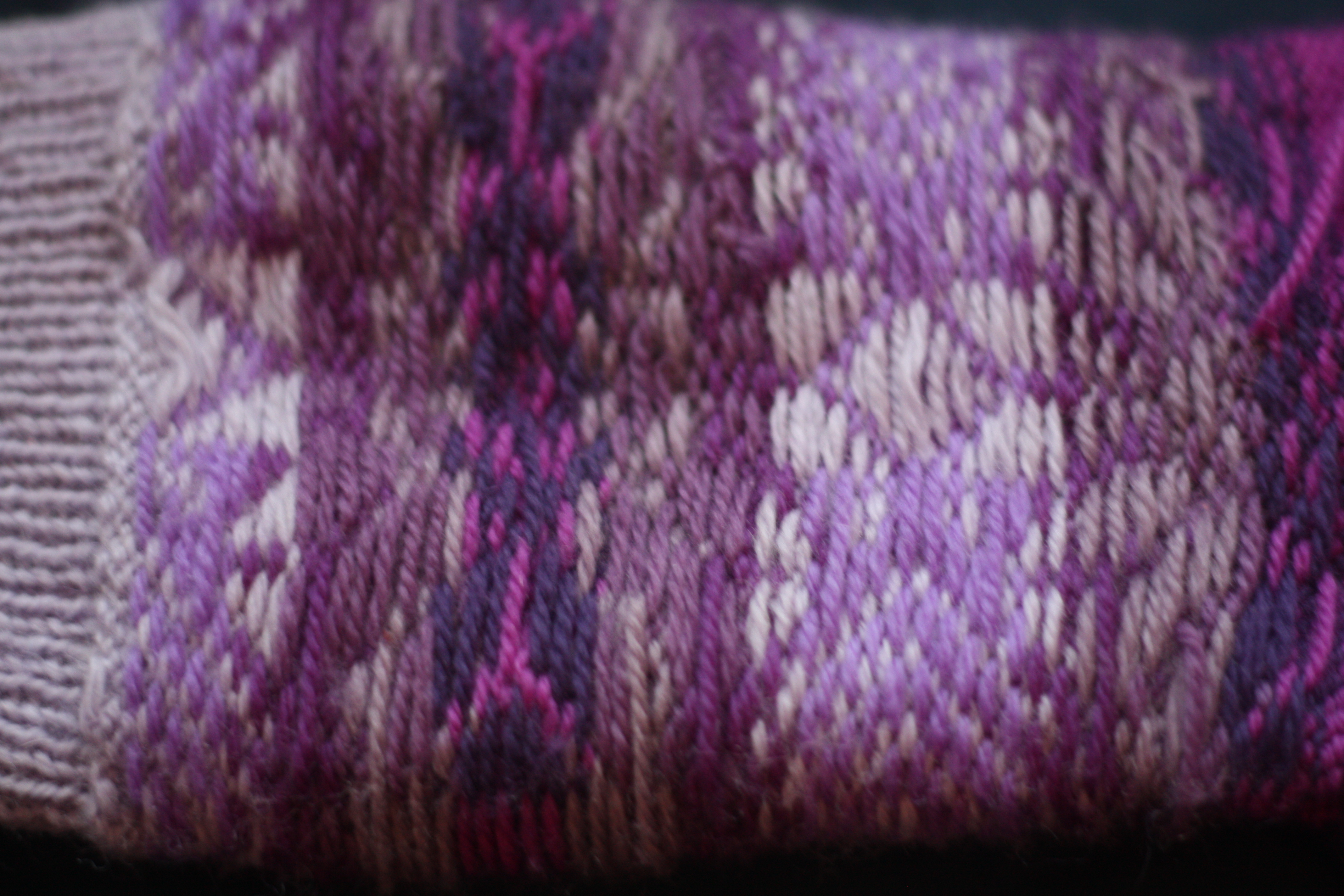
The key to keeping the wrong side relatively neat and orderly is to wrap up the long strands, or floats, along the back side. That way they’ll be less likely to snag, and you’ll make sure you’re not pulling the yarn too tight when you begin to knit with it again. Pulling the floats too tight can make the fabric pucker and mess with gauge.
Of course I learned this lesson “the hard way” while knitting the Bandelier Socks by Lisa Shroyer. Get the pattern here: Bandelier Socks.
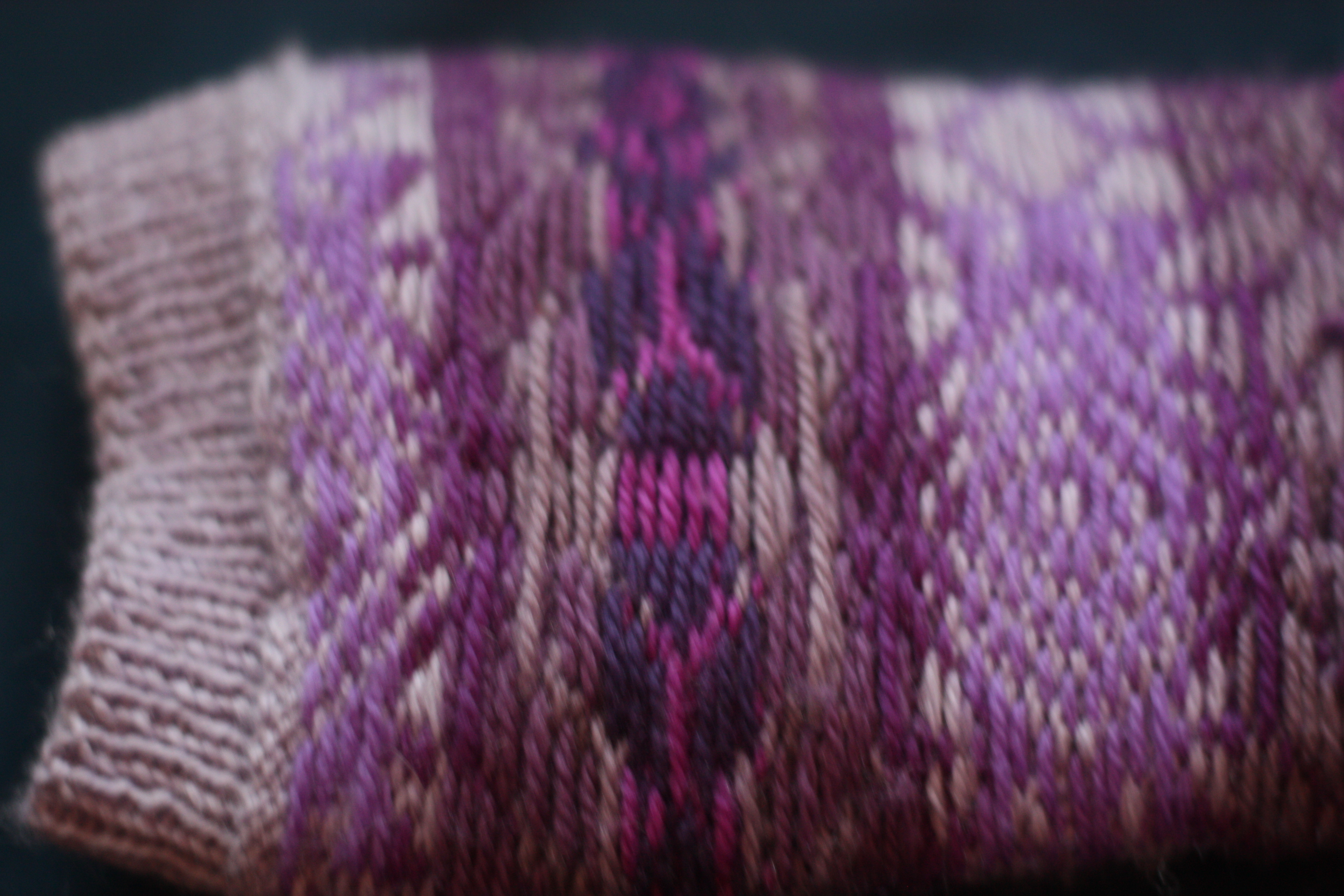
You can see the long grey floats in the midst of the deep purples. I kept them loose enough to not pucker, but they caught my toes a couple of times as I was trying on the sock.
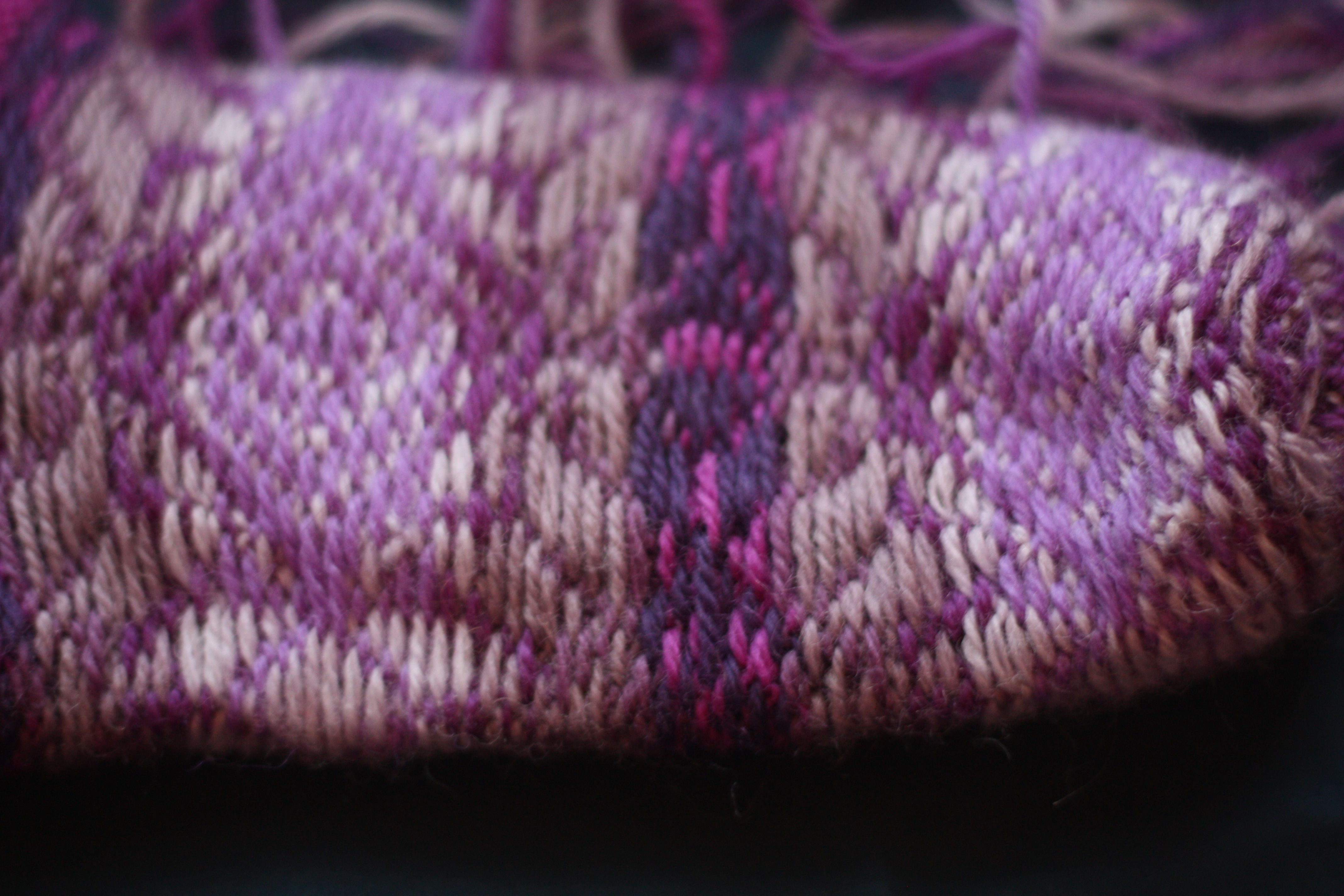
For the bottom half of the sock, I caught on to catching the floats.
Managing Floats in Colorwork Knitting
So as I mentioned yesterday, the easiest way I’ve found to work stranded colorwork is two-handed, or stranded knitting. Here you can see how I’ve got both yarns tensioned, one in each hand.
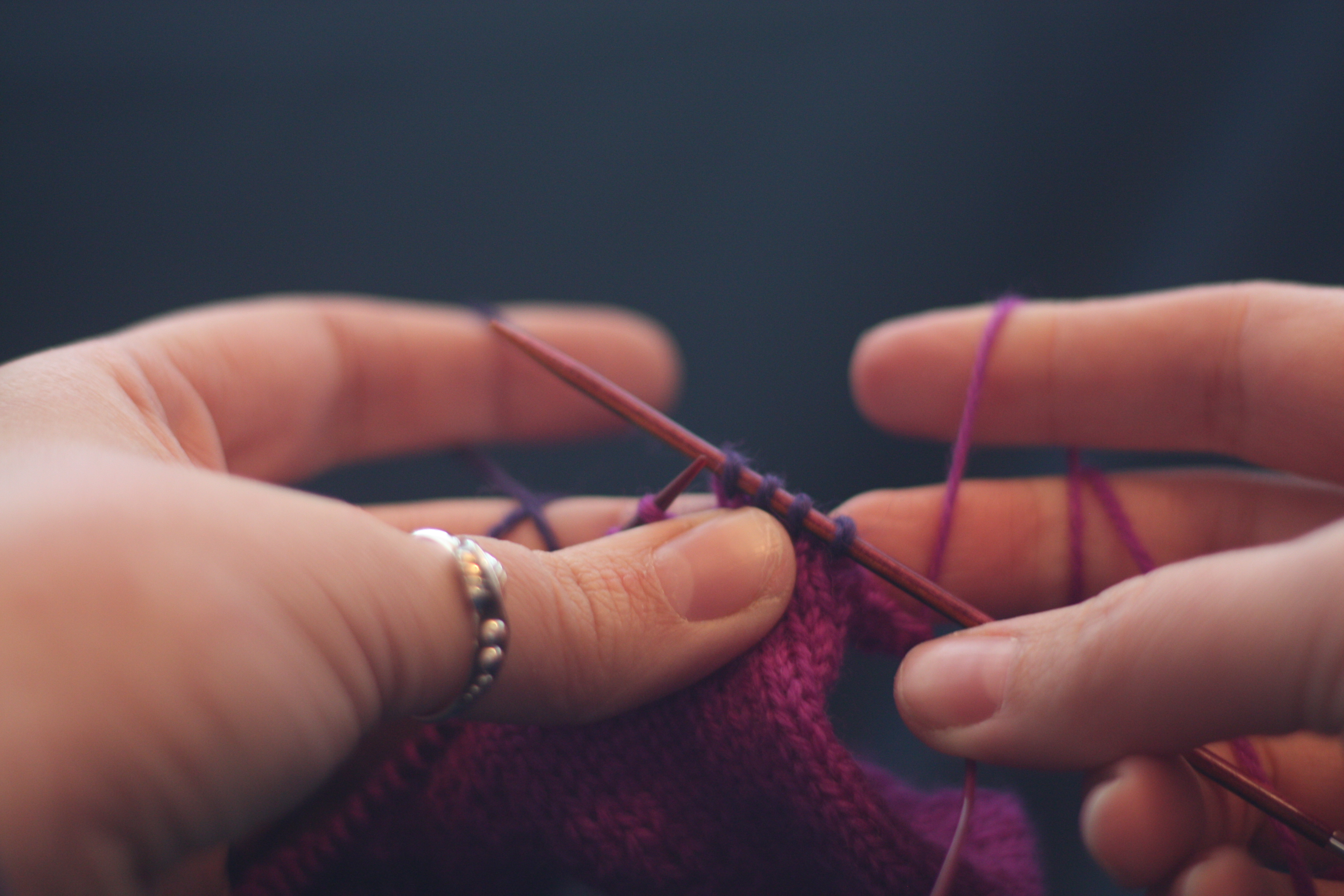
When it’s time to work with the darker yarn, I pick, or knit Continental style. When it’s time to work the lighter yarn, I throw, or knit English style.
One of the characteristics of a true Fair Isle pattern is that there are rarely long runs of stitches. Usually each color is used for two or three stitches before switching to the other color. Many other stranded colorwork patterns use longer color runs, creating the long and potentially troublesome floats. To keep the floats out of the way and the unused yarn from pulling too tight, you want to wrap the unused yarn as you go.
Since I used the stranded knitting method for this type of project, I’m going to be showing how I wrap the yarns. My method may or may not work for you; experiment with whatever feels comfortable for you.
You want to make sure you wrap the yarns the same way every time. If I’m trying to wrap up the yarn in my left hand, I always do so by bringing the right needle up behind the unused color, and then throwing the used color around the needle like normal.
How I Manage Floats in Colorwork Knitting
Here you can see the dark purple yarn in between the two needles.
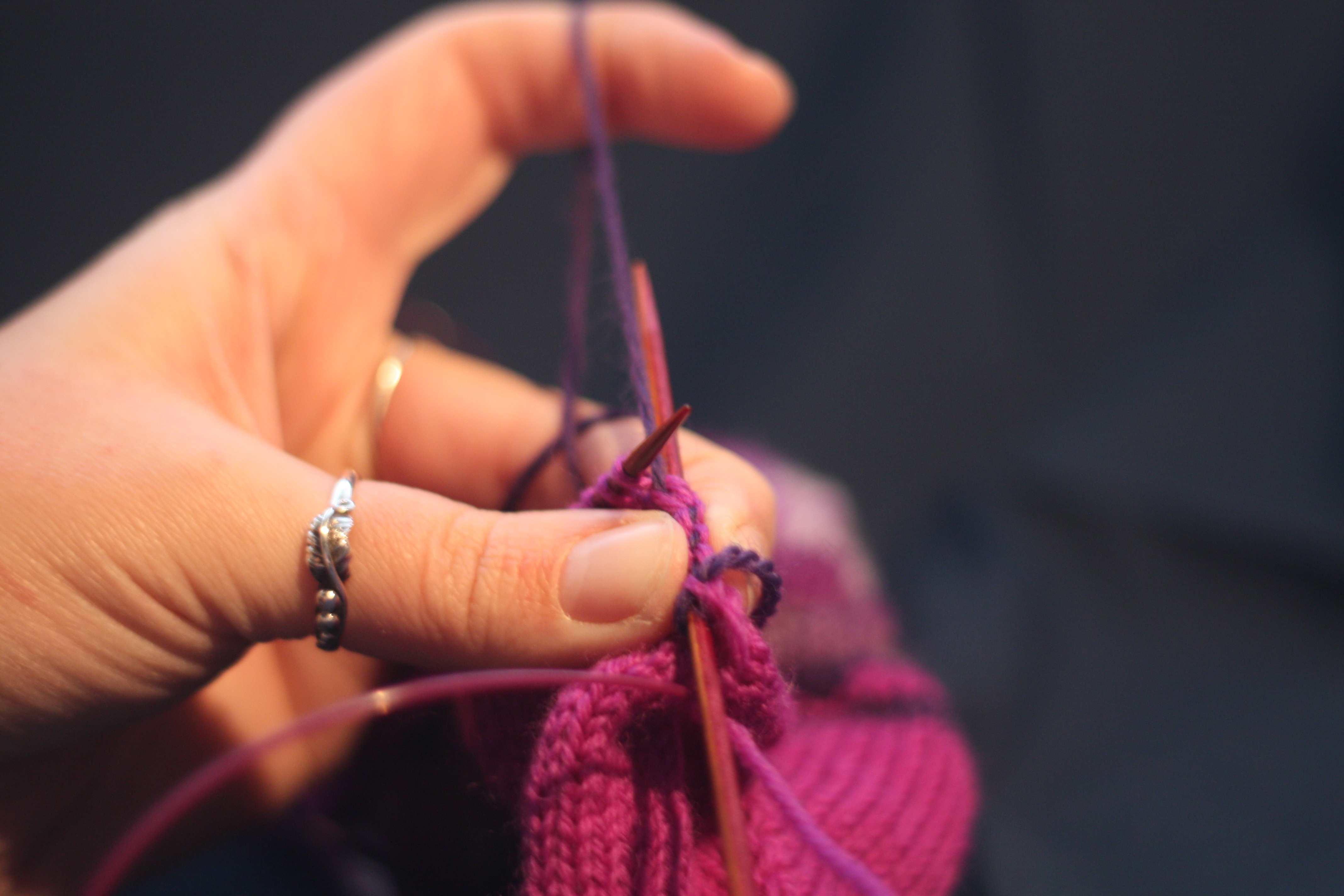
And here you can see that I’ve wrapped the light yarn around the right needle as usual.

When the stitch is finished, it looks just like a normal stitch from the front. You see the unused, darker yarn draping over the used yarn in the back.
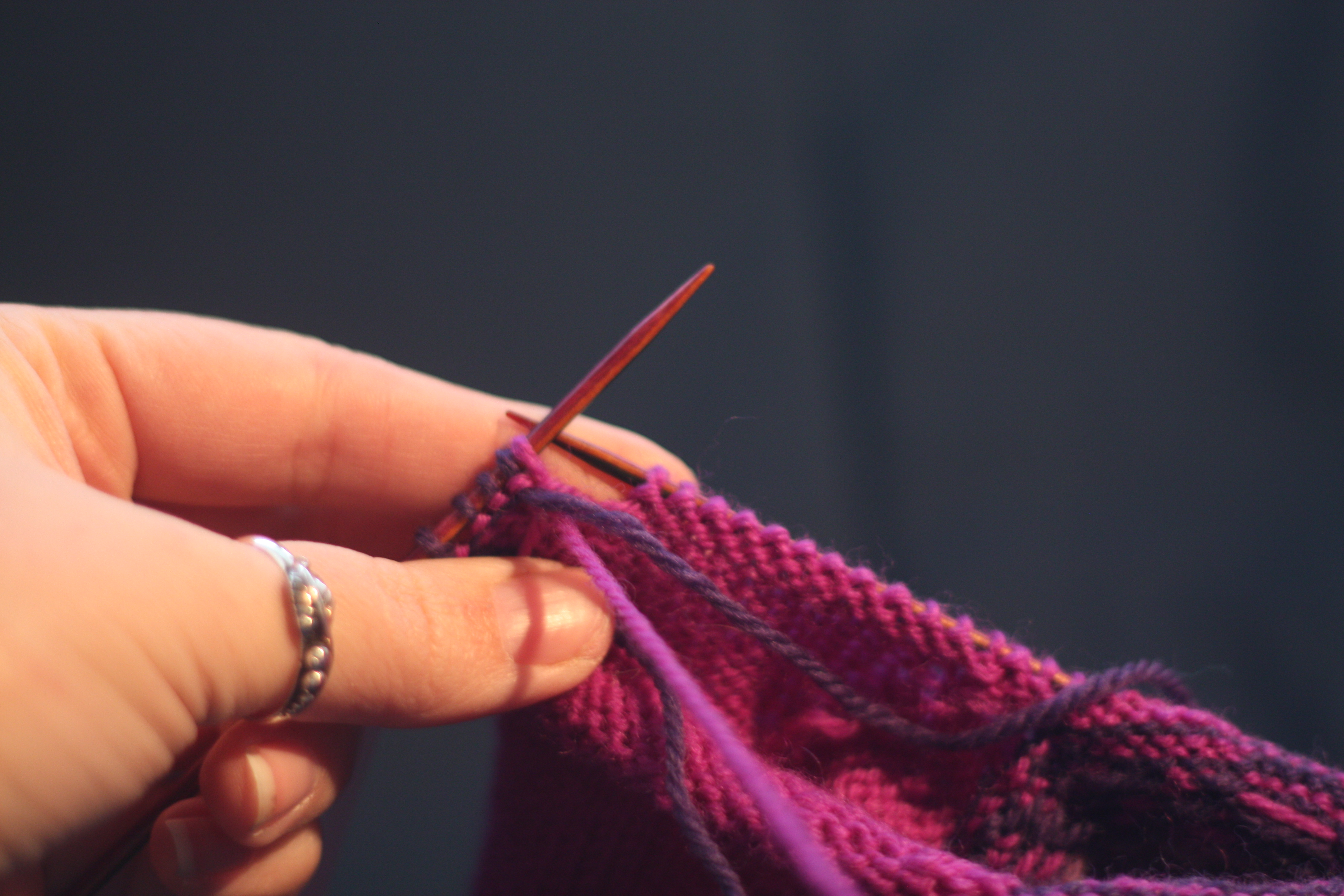
When you knit another stitch, you’ll end up catching that darker yarn and keeping it close to the fabric.

If you need to wrap up the yarn in the right hand, insert the right-hand needle into the stitch, then drape the unused yarn over the needle, in front of the used yarn.
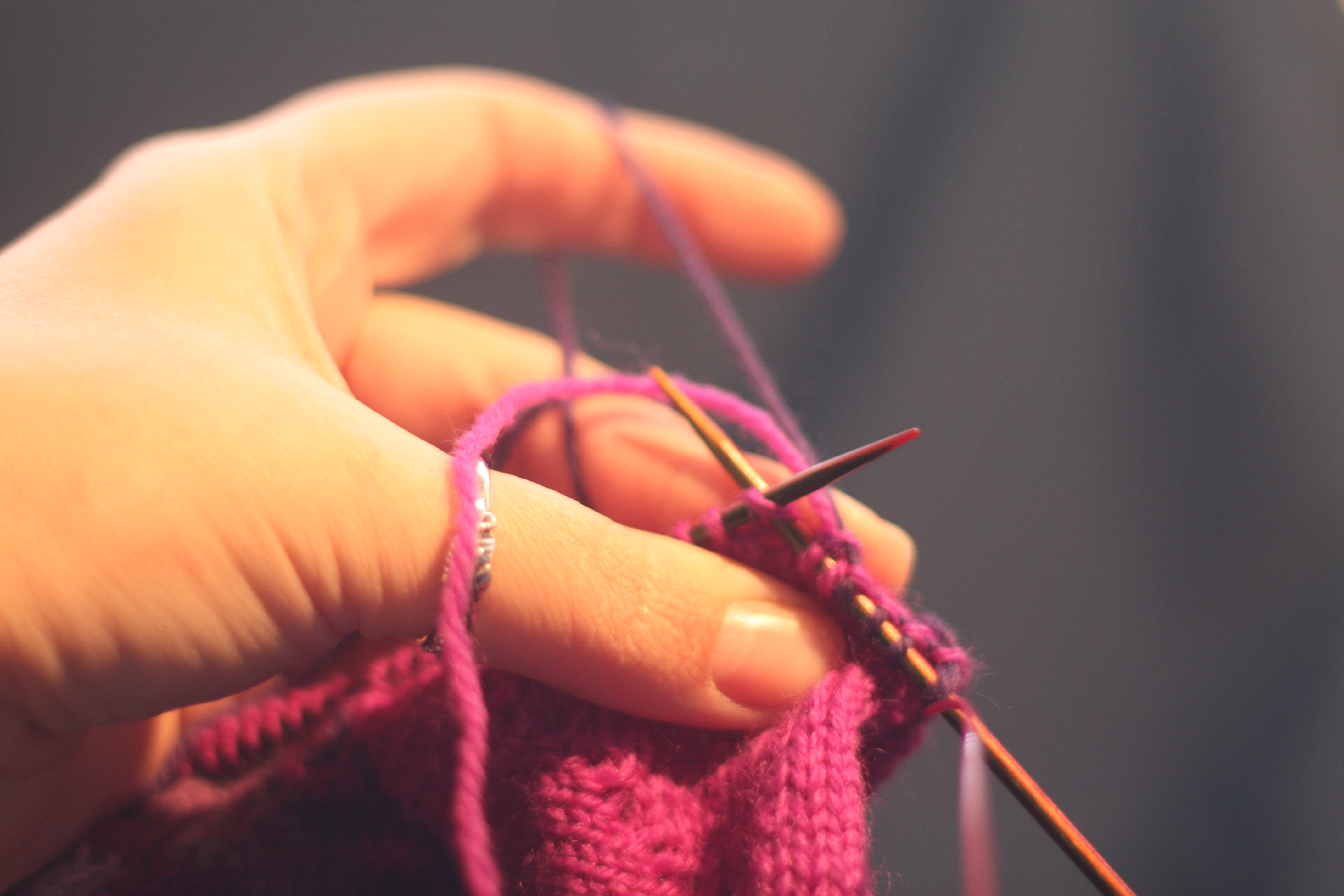
Then knit with the main yarn as usual, catching the unused yarn but making sure it doesn’t come through to the front.
This is difficult to demonstrate managing floats without someone else around to take the photos, but hopefully this will at least give you some idea. There’s another method of stranded knitting, called woven stranded knitting, in which you “weave” the yarns as you’re working to keep the floats all together. However, I’ve never done this method. I did find a video of a gal who demonstrates her way of weaving in all of the floats; maybe this will work for you!

[…] ladder back jacquard technique! This method is an alternative or counterpart to catching long floats when knitting colorwork […]